We all heard about dirty, brutal, heartless Heathens that were attacking defenseless monks and farmers in the Middle Ages. Vikings, as we call those Norsemen, were feared warriors and respected traders (although traders weren’t called Vikings) with fur and other desirable resources, even slaves; which could not be sold on English grounds because of strict anti-slave Christian policy (which seems that was changing through time). “Fortunately,” there were other markets for them, such as in Constantinople.
Norsemen/Danes
The notorious warriors raised on cold, unforgiving North, hardened by an environment, that eliminated those, who weren’t smart or strong enough to survive. Norsemen were, like in all nations of their time, mostly farmers. Some of them decided to try their luck with dangerous raids, seeking wealth and glory. Good warriors and leaders were praised by skalds (traveling Norse poets who shared stories, that shared stories that they learned on their travels, in exchange for some kind of payment and maybe a place to crash for some time) which spread their stories around the whole Norse world. Viking was a profession for those, who sought adventures when they were not needed on farms.
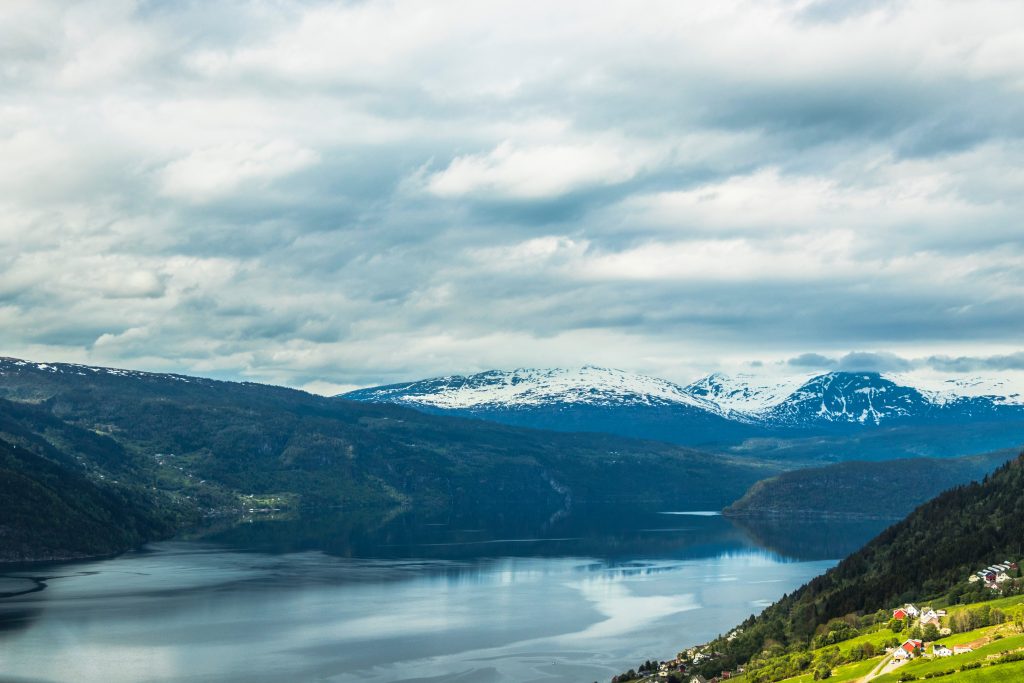
Due to Scandinavia being hard to traverse on land (a lot of mountains and forests) and at the same time being rich with rivers, they learned to make the best ships of their time, good for rivers and open waters. Different types of longships made them successful traders and quick attackers, that caught their victims by surprise.
Wanderlust and adventures Vikings traveled far from their homes. England, France, the Mediterranean Sea, Constantinople, Iceland, Greenland, even America are just some of the reigns that Vikings managed to visit and often populate.
Vikings are nowadays a popular subject in pop culture. Popular shows like Vikings and Last Kingdom raised interest in them. In the manga and anime field, we also have some good and quite accurate (but obviously unrealistic) title Vinland Saga; Vinland is a Norse name for North America, which was discovered by Leif Erikson, son of, if you didn’t guest it by his last name, Erik (the Red) who was exiled from Iceland and made his own settlement in Greenland.
When it came to food, Norsemen ate better than other peasants in Middle Ages. They had two bigger meals a day, which often consists of some sort of meat. They lived quite healthy eating vegetables and washing themselves daily; once a week they even bathe themselves, which was like a miracle in times when even higher classes didn’t appreciate good hygiene (much like some of the people today). When it came to drinking, they liked to drink mead so much, that they even dreamed about Heidruns, mythical goats that gave mead instead of milk.
Animals and people lived under the same roof. Scandinavians had normal house pets as we have them today. Cats, dogs, and if you didn’t mind a few problems with neighbors or your wife, when your pet became a little too playful, bears (they were some sort of status symbol).
What we know about their mythology comes from Norse sagas (stories) and myths, that were written later in their age, which also means that they were affected by Christianity. Nevertheless, their mythology (in Europe second most known one, after Greece mythology in the first place) is an interesting topic for some other article. It affected many writers, among others Tolkien and Marvel Studios, which got inspiration from it.
Vikings, those mere godless heathens from a Christian point of view, grown to be rulers of once “noble” Christian lands (although by that time they were mostly Christians, so maybe actually Christianity won).
Raids
Viking’s “hobby” that made them so famous was, unfortunately, linked to destroying the lives of others. Viking raids were like those internet scams that promise you, quick fame and wealth, only that in this case, participants were not the ones losing money. Raids were opportunities for the young men to make their names, see the world, get rich, made new bounds and get some experiences (which were very important for future leaders).
A theft was a very unhonourable thing to do, but raiding was not viewed as such. On the opposite, raids were a legitimate and honorable way to take something that wasn’t yours, even if the victims were farmers or monks incapable of defending themselves. But if someone is incapable of defending themselves, he deserves to lose everything right? Vikings couldn’t just sneak into the village/monastery and took everything without any casualties because that would just be considered theft. They needed to kill those who oppose them, rape women and destroy what couldn’t be taken, because that was, logically, much better than just taking their belongings without using violence.
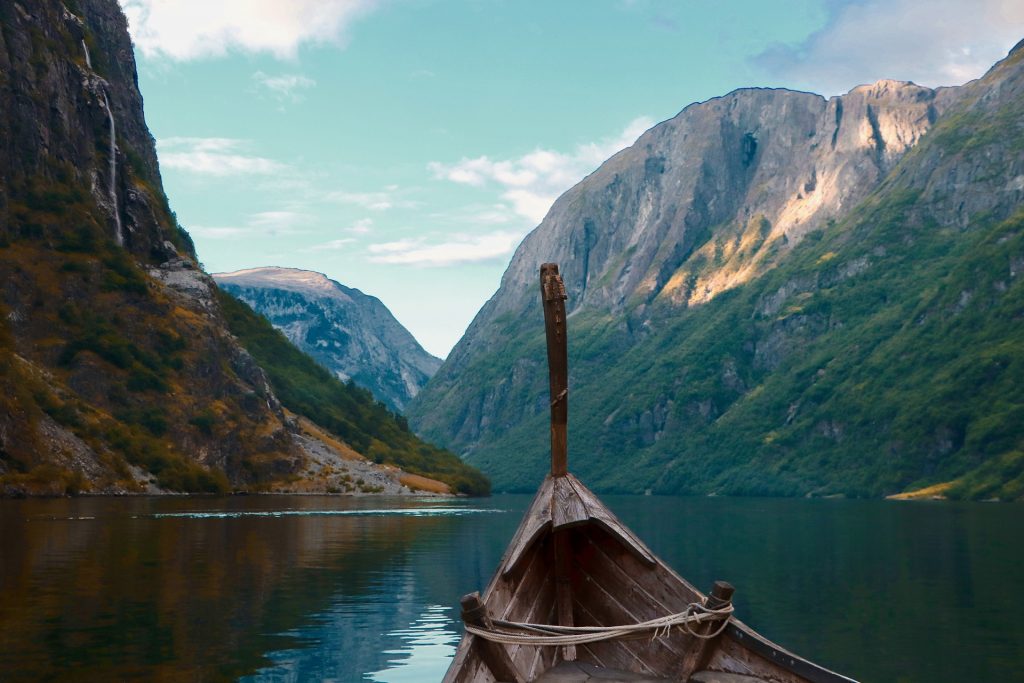
The size of raiding parties varied and consisted mostly of young men; older men usually decided to settle down with their families. Vikings ships were of high quality. Because of their shape, Vikings could come right onto the land, so defenders didn’t have a lot of time to react at the sight of them. Vikings took what they wanted and left before the reign could establish a functional defense. They took, what they could transport on the ship. Tools, gold, silver, weapons, clothes, food and people were taken by them. Livestock was slaughtered and eaten after a successful raid since there was no place on the ship. People that were taken, now named slaves, were later sold on Unchristian markets, such as in Constantinople.
The first documented Viking raid on England was in June 793, when three ships came to the monastery in Lindisfarne (North of England). The event shocked both sides. Christians were shocked by the fact, that someone would attack the monastery (it doesn’t seem like a Christian thing to attack monks) and Norsemen were surprised by the stupidity of those people, who didn’t protect all these riches just lying there, waiting to be taken. Monasteries became a popular destination for Vikings and Christian believed that it was some sort of God’s punishment, why else would God let this happen; they even wrote about dragons and lightnings six days before this raid (the document also said, it happened in January when others reported that event took place in June).
The written sources that describe those raids were written by victims, so it is possible that Vikings were not exactly just a bunch of bloodthirsty savages. On the other side, a lot of them sought passage into Valhalla, a place where chosen fighters “lived” in the afterlife, which was obtainable by being a good, famous, brave warrior. Drengr, a good man, was someone who fought to the bitter end, was loyal, trustworthy and brave. Vikings believed that death is decided by Norns, but what you do to this day, is up to you; a belief that could easily made some of them forget about death and just live life to the fullest.
The men were not the only ones who participated in raids, there are some proves that even some women, shield-maidens, raided side by side with men. Probably not a regular thing, but it shows freedom, that they enjoyed compared to women in other cultures; they also could divorce their husbands.
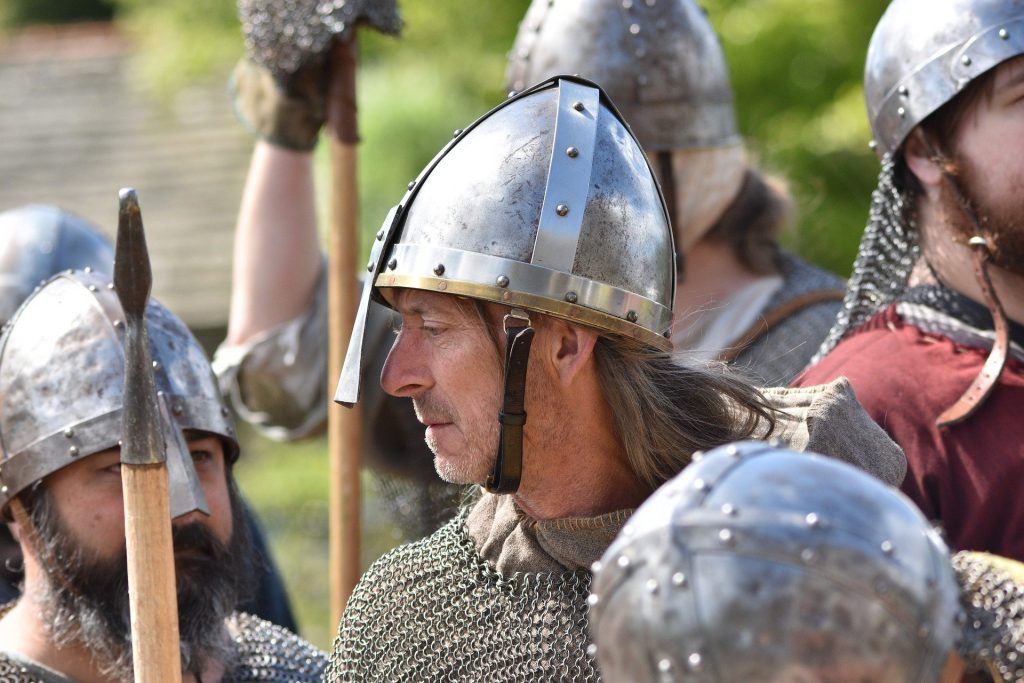
Vikings mostly used spears and shields, which were very useful, when they clashed with actual soldiers. On those occasions, Vikings liked to ambush them and use surprise to their advantage. In more “fare” fights they used shield walls, which were, you wouldn’t believe, made out of shields carried by men standing close together. Some of the richer Vikings had swords that, if they were well made, were passed from father to son; until someone wanted to be buried with his sword and robbed his descendants of this opportunity (swords in graves were broken, so tomb raiders, or maybe offended sons, wouldn’t steal them).
England was not the only place that attracted Viking raiders. Pisa, Seville and Paris are just some of the other well-known places, that suffered their presence. Some of those raids ended with destroyed cities and others with defenders paying tribute so Vikings would leave; there were also occasions with Vikings being defeated, but where is fun in mentioning that. After the siege of Paris, one of the Viking’s leaders Rollo (just like in the show Vikings, although he was not an actual brother of Ragnar) even got Normandy in northern France, in return for defending it against other Vikings, that would like to try their luck.
Vikings were well known for their savagery. Some of them were living embodiment of this term. Berserks were highly motivated by their goal, to go to Valhalla and serve Odin, when Ragnarok (the end of the world) will come. They were members of the Cult of Odin and other Vikings sometimes avoided them, because of their unpredictability. Berserks were crucial in battle, where Vikings needed fearless, strong warriors in front lines. Before going into the battle, they did some kind of ritual, that “woke” their animalist side. Some sources suggest, that they used alcohol and psychedelic substances, like mushrooms, to get more strength and went into a state, where they didn’t care about injuries. Berserkers could also go too far and attack their own comrades, which is one of the reasons, why sometimes they weren’t accepted in society.
The Great Heathen Army
In the same year as Wessex got a new king Aethelred, Vikings decided to try a new tactic. Raids were not enough anymore, they needed more, so in the year 865, around 3000 men sailed to the shores of East England. They made a deal with King Edmund of East England to spend the winter on his land, close to Thetford. Hundreds of Norwegian, Sweden and Danish warriors wintered there, prepared to conquer England when spring will come.
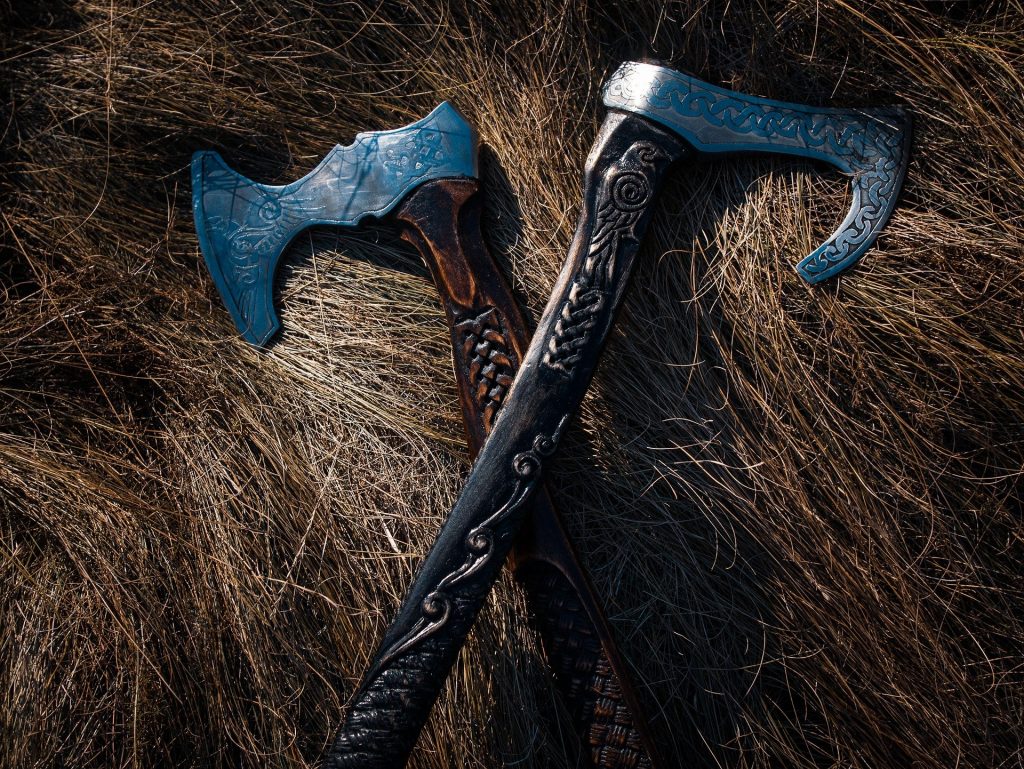
The invasion of England was a somehow logical step for military society, which profited so much from raiding those fertile lands (opposite of what they had) for decades and different Norse leaders finally saw an advantage in the union. Other versions of the reason, why they came together, are written in Icelandic sagas and are quite similar to the story of show Vikings. After famous Ragnar Lodbrok died in the snake pit, thrown there by the hand of Northumbrian king Aelle, his even more famous sons decided to revenge his death and brought Viking leaders together.
After the winter in East England, Ivar the Boneless, Ubba and Halfdan Ragnarsson (names as they had them in sagas, the spelling of their names depends on the document because varying Anglo-Saxons and Vikings wrote them differently) marched north, took York and defeated Northumbria. After this “lucky start,” they turned south to Mercia. They took the town of Nottingham, whereupon King Burgred of Mercia found out, that he wants stay ruler of Mercia and paid tribute to the obviously stronger enemy. Vikings left and went back to York for another winter.
After winter, they decided to pay a visit to an old friend in East England. Unfortunately for King Edmund the Martyr, that didn’t end like the last time and Vikings conquered East England. Edmund was tied to a tree and shot multiple times since he wouldn’t deny his faith.
In the year 870 army split into two parts. Ivar’s part went north to secure Northumbria and conquer Scotland. The other part was led by Halfdan and went south to Wessex. Another Viking leader Begsecg joined Halfdan on his march against Wessex. They succeeded in the town of Reading and optimistically marched further into Wessex.
On the north, Ivar joined forces with Vikings from Dublin, which were under Olaf the White command. Ivar and Olaf were together so successful, that Ivar decided to retire with all the gold, that he had acquired through those years.
Meanwhile in southern reigns, The Battle of Ashdown took place. In 871 King of Wessex Aethelred and his brother Alfred, stood up to this foreign heathen force again in hope of saving their land. On this foggy day (because England you know) Alfred confronted Vikings first, so he wouldn’t need to give away their tactical advantage (if you watched Star Wars, you know how important high ground is), while his brother was praying and refusing to join the battle until he is done. Vikings, thinking that Alfred is the only one that came to fight, focused all their forces on him. It wasn’t looking good for Alfred and his men, which fought for hours, because the king set priorities, as all God serving men should and was prepared to sacrifice his brother if this meant to finish his prayers (the action that would better suit a monk, then a king). After the prayers were done, Aethelred finally decided, that it is time to help his brother. He surprised Vikings when his men came through the fog and attacked them from the side. The Battle of Ashdown resulted in the first important victory against Vikings.
Halfdan and Guthrum, that also joined him on a quest to conquer Wessex, retreated from the lands of King Aethelred. They split the army once again. Halfdan went after Ivar’s steps to the north and Guthrum went back to East England, which was now under Viking’s control.
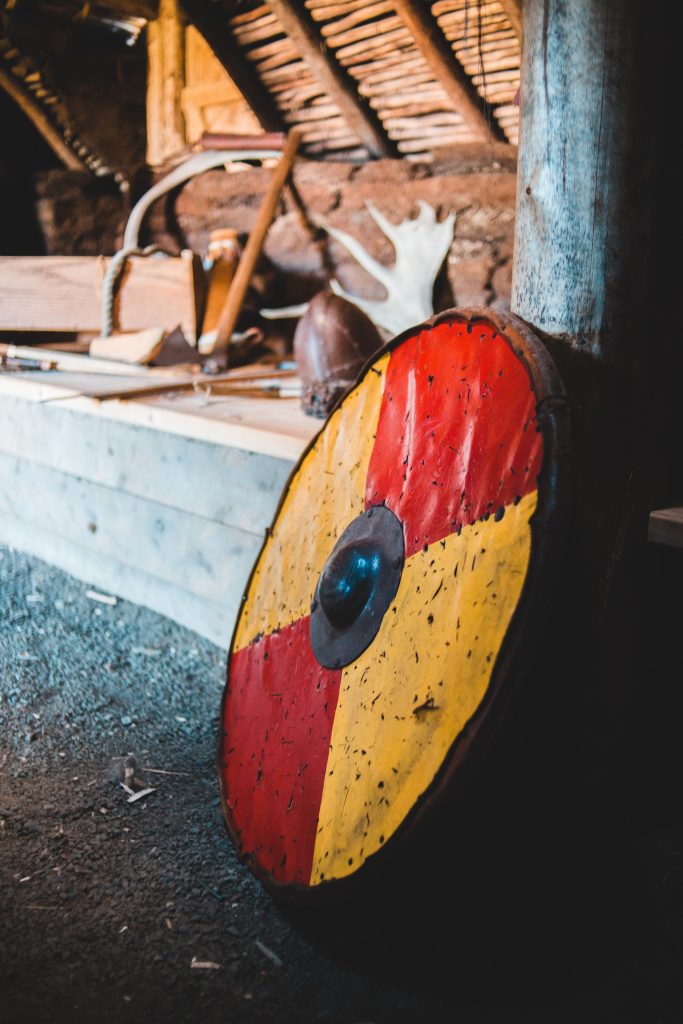
Mercia became the next goal for Guthrum and his man. They marched in 874 and put their own puppet ruler on the throne, after betting Mercian’s forces. Vikings liked to have puppet rulers on thrones, that they took. Local people probably better-accepted someone, who wasn’t Viking to rule over them and Vikings didn’t need to deal with all exhausting aspects of the ruling.
In the year 875, they started again looking for an invasion of Wessex. Small raids took place in an attempt to weaken Wessex’s power. In 876 Guthrum took Wareham, whereupon Alfred, that was now a king after Aethelred died in 871, paid tribute and Vikings left Wessex once again.
Next spring they came back and took Exeter. Meanwhile, Ubba waited on the south of Wales, prepared to join Guthrum. 120 ships with 4000 Vikings abroad set sail to help Guthrum defeat Alfred. Fortunately for Alfred, those men change their minds about joining Guthrum. Not because they hated him, but because of bad weather. Who would thought that a little sea storm, that destroyed almost an entire fleet, would change their minds? Just like the storm saved Japan from the Mongol invasion, it also saved Wessex from the Viking invasion; maybe the sea just doesn’t like islands being invaded.
After that Guthrum’s plan fall into water (get it?) and Guthrum went north to Glouchester. On January 6. 878, when Englishmen celebrated Christmas, Guthrum attacked (like a Grinch that hates Christmas) and took Chippenham. Alfred managed to escape and east into the swamp and hid there (some would argue he searched for Shrek, while others would say it was a logical solution because Alfred knew those lands very well, from the time when he was a child). He then proceeded to use Viking’s tactic (if you can’t beat them, join them) and sent raiding parties on his lands (desperate times call for desperate measures) to weaken their power.
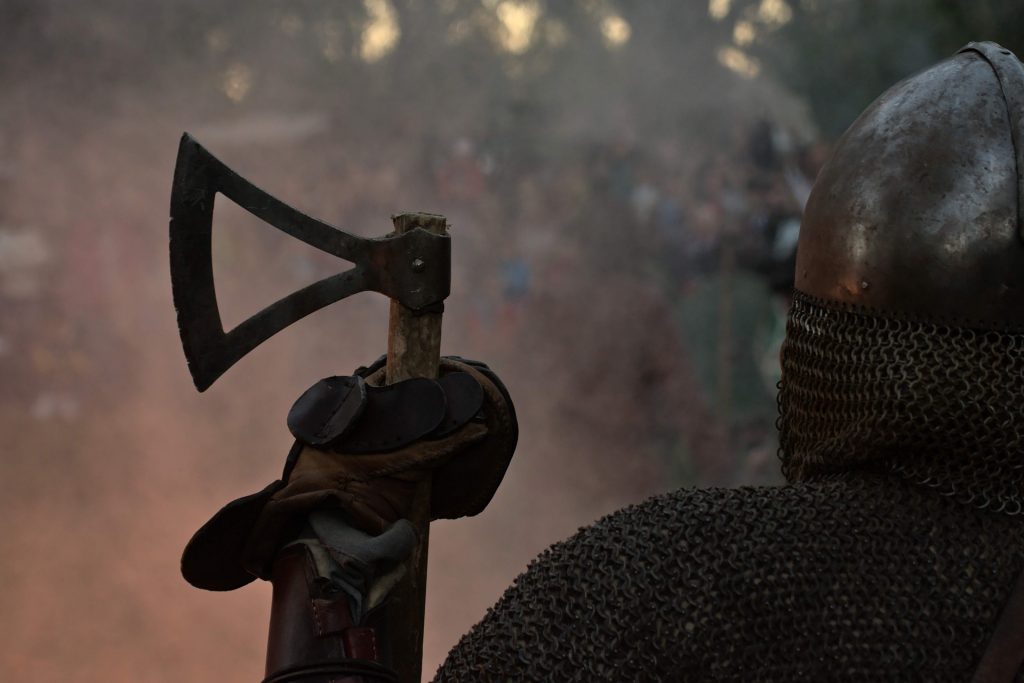
After hard work was done, Ubba finally came to take part in the invasion. But Alfred wasn’t done yet. He sent messages to all his lords, to meet him with their soldiers at Egbert’s Stone. On his way there, Alfred clashed with Ubba. Ubba and his men from 23 ships, which is just a little bit smaller force compared to his 4000 men from 120 ships from his first attempt to help Guthrum, lost in The Battle of Cynwyd, where Ubba also met his end. Alfred continued his journey and reached Egbert’s Stone. He anxiously waited there for 3 days. Probably without good reason, because if his allies wouldn’t come, he would just lose a kingdom and perhaps his life, nothing to be worried about.
Fortunately, lords came. Wessex’s army was assembled and The Battle of Eddington was going to be legendary. Guthrum’s and Alfred’s army met and after a day of fighting, Wessex emerged victoriously. Guthrum retreated to Chippenham and waited there for 4 weeks, while Alfred’s army besieged him. After 4 weeks, Guthrum decided he had enough and signed The Treaty of Wedmore. That led to lasting peace between Guthrum and Wessex, Guthrum’s Vikings returning to East England and Guthrum being baptized because nothing speaks loser louder, then being baptized on the order of man that beat you (there are obviously better reasons for this action, such as setting an example for other pagans to join them in their faith).
Alfred then ruled relatively peacefully until his death, while Vikings secured Danelaw, a new “country” under Norsemen control on the north of England. After Alfred’s death in 899, the crown passed on his son Edward, which didn’t sit well with Aethelwold, son of Alfred’s brother and former king of Wessex Aethelred. Aethelwold then found help on the north in Danelaw, where Vikings saw an opportunity to use him and a new war was on the horizon.
Sources/Further Research
- https://www.youtube.com/watch?v=lVbjaoFDiFk, Units of History – Viking Berserker DOCUMENTARY
- https://www.youtube.com/watch?v=rr1wNpNMw-s, Viking Raids | What It Was Like to Be On the Front Lines
- https://www.youtube.com/watch?v=QMgKLCiODo8, What Was Life Like for the Average Viking
- http://www.hurstwic.org/history/articles/society/text/raids.htm, Viking Raids
- https://www.youtube.com/watch?v=ugxbA2mEH0E&t=449s, The Brutal Reality of Viking Raids
- https://www.youtube.com/watch?v=G3_iLTpTYhY&t=892s, 1000 AD: A Tour of the Viking World // Vikings Documentary
- https://www.youtube.com/watch?v=dS569FQq8ww, Vikings: Great Heathen Army – Battle of Ashdown 871 DOCUMENTARY
- https://www.historic-uk.com/HistoryUK/HistoryofEngland/Ragnar-Lothbrok/, The Real Ragnar Lothbrok
- https://www.youtube.com/watch?v=32tFO0VYlJU&t=1s, The Viking Invasion of England | The Great Heathen Army
- https://www.historic-uk.com/HistoryUK/HistoryofEngland/Great-Heathen-Army/, The Great Heathen Army
- https://www.youtube.com/watch?v=y-mTe31FcU8, Vikings: Battle of Edington 878 – Great Heathen Army DOCUMENTARY
- https://www.ancient.eu/Ivar_the_Boneless/, Ivar the Boneless
- https://www.youtube.com/watch?v=GQMNQgFX9mw, Vikings: War for England – Danelaw DOCUMENTARY
- https://www.youtube.com/watch?v=KK-MZLrfXk8, History Summarized: The Viking Age
- https://www.ancient.eu/article/1197/viking-raids-in-britain/, Viking Raids in Britain
- https://www.history.com/topics/exploration/vikings-history, Vikings
Picture Sources
- Cover image: Image by Gioele Fazzeri from Pixabay
- 1. Picture: Photo by Nextvoyage from Pexels
- 2. Picture: Image by Flore W from Pixabay
- 3. Picture: Image by Gary Chambers from Pixabay
- 4. Picture: Image by Valerii Iavtushenko from Pixabay
- 5. Picture: Photo by Erik Mclean from Pexels
- 6. Picture: Image by Adam Małycha from Pixabay

